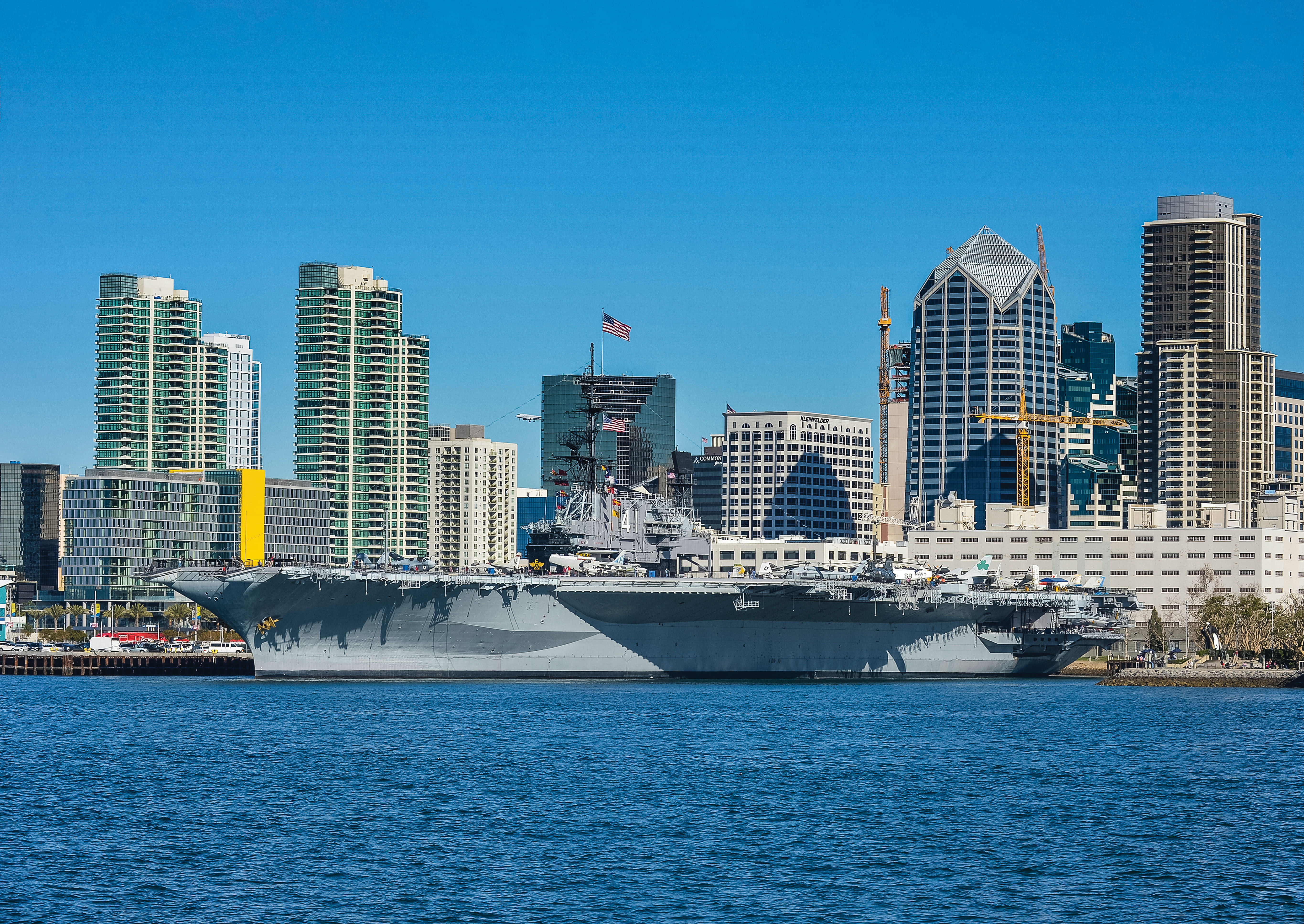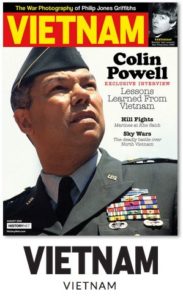A San Diego museum showcases one of the Vietnam War’s most famous aircraft carriers
Years ago I drove past the U.S. Navy aircraft carrier Midway with a friend shortly after it was permanently docked in San Diego as the USS Midway Museum. During my four years in the Navy I was a swift boat maintenance and repair electrician in Vietnam and subsequently stationed on the USS Sperry, a supply ship for submarines, at San Diego’s Ballast Point. I glanced at the massive aircraft carrier and said, “Whoa, that sure is a huge ship!” During my friend’s 20-year career in the Navy he was a pilot with many landings on the flight deck of carriers. Looking at the ship, he answered, “That sure is a small airport!”
Named for the decisive June 1942 Battle of Midway in the Pacific during World War II, the carrier was launched on March 20, 1945, and commissioned Sept. 10, 1945, eight days after Japan’s formal surrender. The ship was decommissioned April 11, 1992. Built by Newport News Shipbuilding Co. in Virginia, the Midway hosted an air group of about 130 planes shortly after it was commissioned.
The ship’s crew totaled about 4,000 officers and enlisted men.
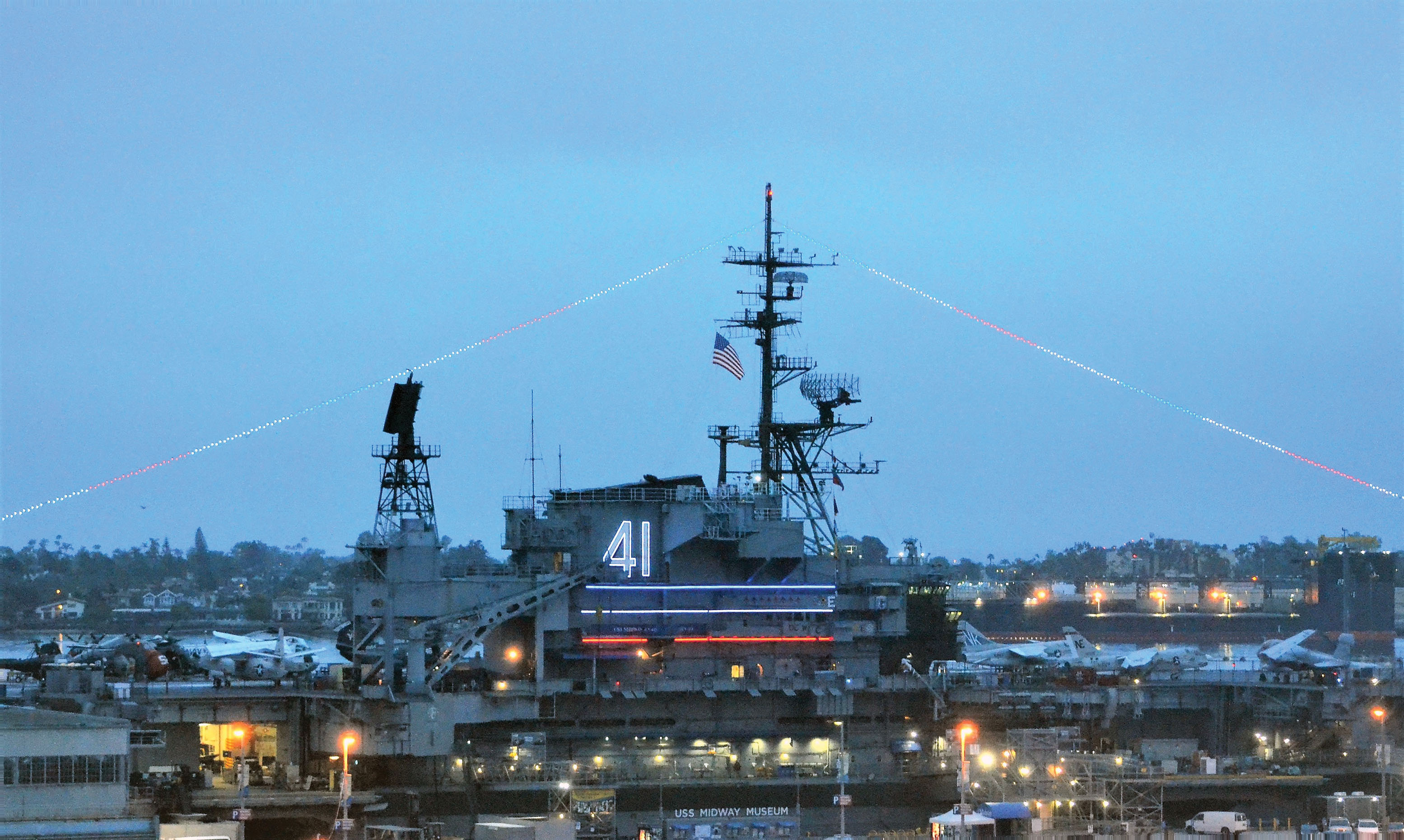
The ship is 1,001 feet long and powered by 12 boilers turning four Westinghouse steam turbines to provide a propulsion of 33 knots (38 mph). The Midway was the largest ship in the world until 1955. The carrier underwent numerous upgrades as it adapted to the jet and nuclear ages. These included a lengthened deck, installation of advanced radar and more sophisticated weapons. The number of aircraft on the flight deck was reduced to 100 from 130 after determining the reduced number could be coordinated more efficiently.
In a 1947 test of new technology, the Midway launched a captured German V-2, the first large-scale rocket fired from a moving platform. That success was a catalyst for naval missile operations. Two years later, the ship launched a modified P2V-3 Neptune capable of carrying a 9,000-pound atomic bomb, proving that airplanes loaded with atomic bombs could be based on aircraft carriers.
Over 10 years, the Midway made seven deployments in European waters as a part of the Atlantic Fleet. After work at the Puget Sound Naval Shipyard from June 1955 to September 1957, the Midway returned to service with its home port in Alameda, California, near San Francisco. In April 1962, the carrier departed on a Far East tour to Korea, Japan, Taiwan and the Philippines.
Midway’s operations in Vietnam began in March 1965 with airstrikes over North Vietnam in Operation Rolling Thunder. On June 17, F-4B Phantom IIs from the carrier’s Fighter Squadron VF-21 shot down two MiG-17 fighters, the first official aerial victories against the North Vietnamese.
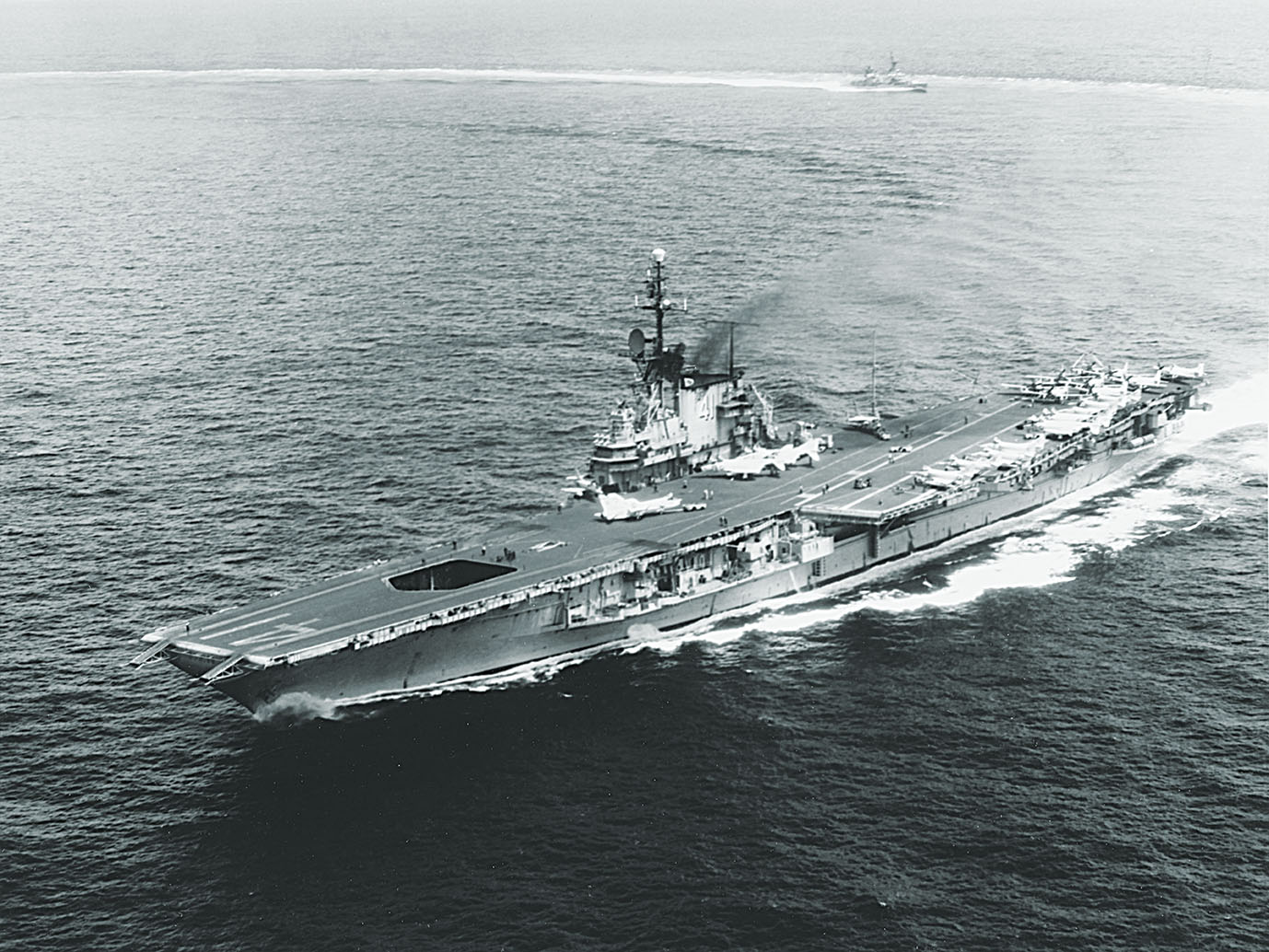
On Jan. 12, 1973, another Midway-based F-4B scored the last aerial victory in the war when it downed a MiG-17 over Haiphong, North Vietnam, killing Senior Lt. Luu Kim Ngo of the 923rd Fighter Regiment. That F-4B bearing the names of its crew, Lt. Vic Kovaleski and Lt. j.g. Jim Wise, is on the Midway flight deck today.
Also on display is a UH-1 Huey helicopter armed with machine guns and rockets. Hueys
occasionally deployed from the Midway to provide cover for small Navy patrol craft, “swift boats,” plying inland waterways. Other aircraft on the flight deck include an RA-5C Vigilante reconnaissance plane, an A-4 Skyhawk attack aircraft, an EKA-B3 Skywarrior multi-mission aircraft and an F/A-18 Hornet fighter painted to resemble a Russian MiG, an F-14 Tomcat fighter, an A-6 Intruder attack aircraft, an EA-6B Prowler electronic warfare plane with radar-jamming equipment and a C-1 Trader cargo plane.
The Midway museum offers an opportunity to see an SH-3 Sea King anti-submarine helicopter (which could be armed with torpedoes) that played an important role outside the war zone. It was used to recover Apollo astronauts after their spacecraft landed in the ocean. It also served as the president’s “Marine One” helicopter.
The scene inside the Midway’s command center—the “bridge”—gives tourists a rare glimpse of the machinery used to maneuver such a huge ship. Interestingly, the primary helm control used to turn the Midway’s rudders and steer the ship is a rather modest-size brass wheel.
The now mannequin-occupied engine control room is stuffed with instruments and communications equipment that controlled the engineering plant and regulated the amount of steam going into the turbines.
After nine months off the coast of Vietnam, the Midway returned to the United States in November 1965. The ship was decommissioned in 1966 for an expensive four-year overhaul at a San Francisco shipyard. The work included expansion of the flight deck and the installation of new electronic systems.
The Midway went back to Vietnam in May 1971, relieving USS Hancock in the Gulf of Tonkin, and returned to Alameda in November 1971.
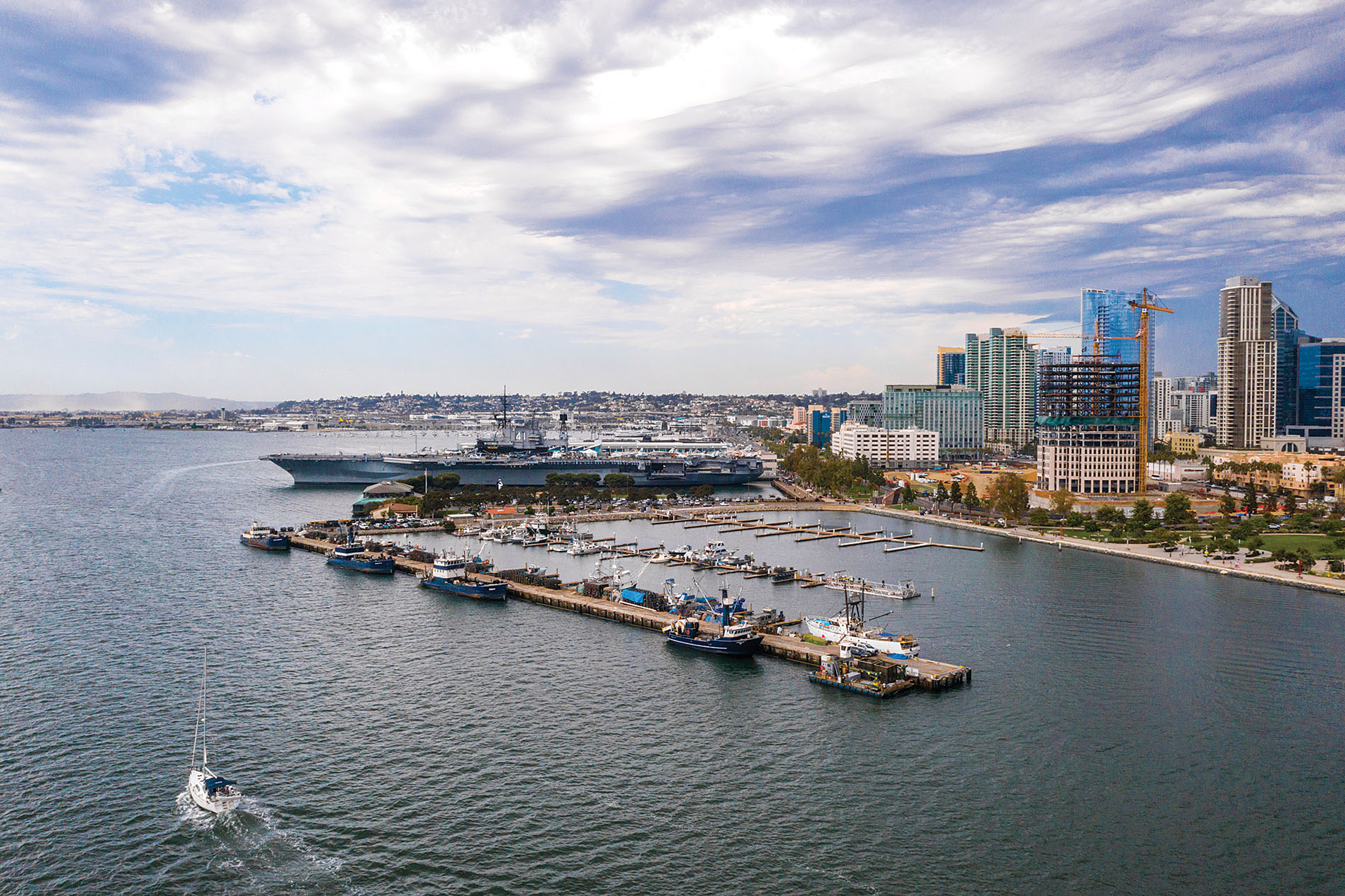
The ship was underway again in April 1972 for a third deployment after the March 30 “Easter Offensive” invasion of South Vietnam by North Vietnamese forces. The Midway’s aircraft played a major role in the U.S. effort to stop the flow of North Vietnamese troops and supplies into the South. In May, aircraft aboard the Midway joined those on other carriers to drop mines into the waters of North Vietnam’s major ports. During summer 1972, bombers launched from the Midway struck sites in North Vietnam during the Operation Linebacker air campaign.
The Midway sailed home to Alameda after President Richard Nixon announced a ceasefire on Jan. 15, 1973, during negotiations in Paris for a peace treaty. The Midway and its Attack Carrier Air Wing 5 received a Presidential Unit Citation from Nixon recognizing their “excellent teamwork and dedication and sustained superior performance” in Vietnam from April 30, 1972, to Feb. 9, 1973.
The Midway wasn’t in the U.S. long. In September 1973, the ship left Alameda for a new home port in Yokosuka, Japan, where it arrived in October. It was the first American carrier with its home port in a foreign country.
In April 1975, as South Vietnam was about to fall to a fast-moving takeover of the country by the North Vietnamese, the Midway was once again in Vietnamese waters as it participated with dozens of other ships in Operation Frequent Wind, an effort to evacuate thousands of Americans and South Vietnamese working closely with U.S. personnel. The evacuees were flown by helicopters to the American ships.
Over two days, the Midway’s big H-53 transport helicopters flew more than 40 sorties and carried more than 3,000 Americans and South Vietnamese refugees to safety.
In a most dramatic incident of Operation Frequent Wind, South Vietnamese air force Maj. Buang-Ly flew out to sea in a small propeller-driven Cessna O-1 Bird Dog with his wife and five children inside, hoping for the best. He had never landed on an aircraft carrier before, not even seen one. He saw the Midway and headed in, but the flight deck was filled to capacity with helicopters. To provide landing space for Buang, the Midway’s commanding officer, Lawrence Chambers, the first African American captain of a carrier, ordered several helicopters pushed overboard. Buang landed successfully. A replica of his plane is on the Midway’s hangar deck. (The original is at the Naval Aviation Museum in Pensacola, Florida.)
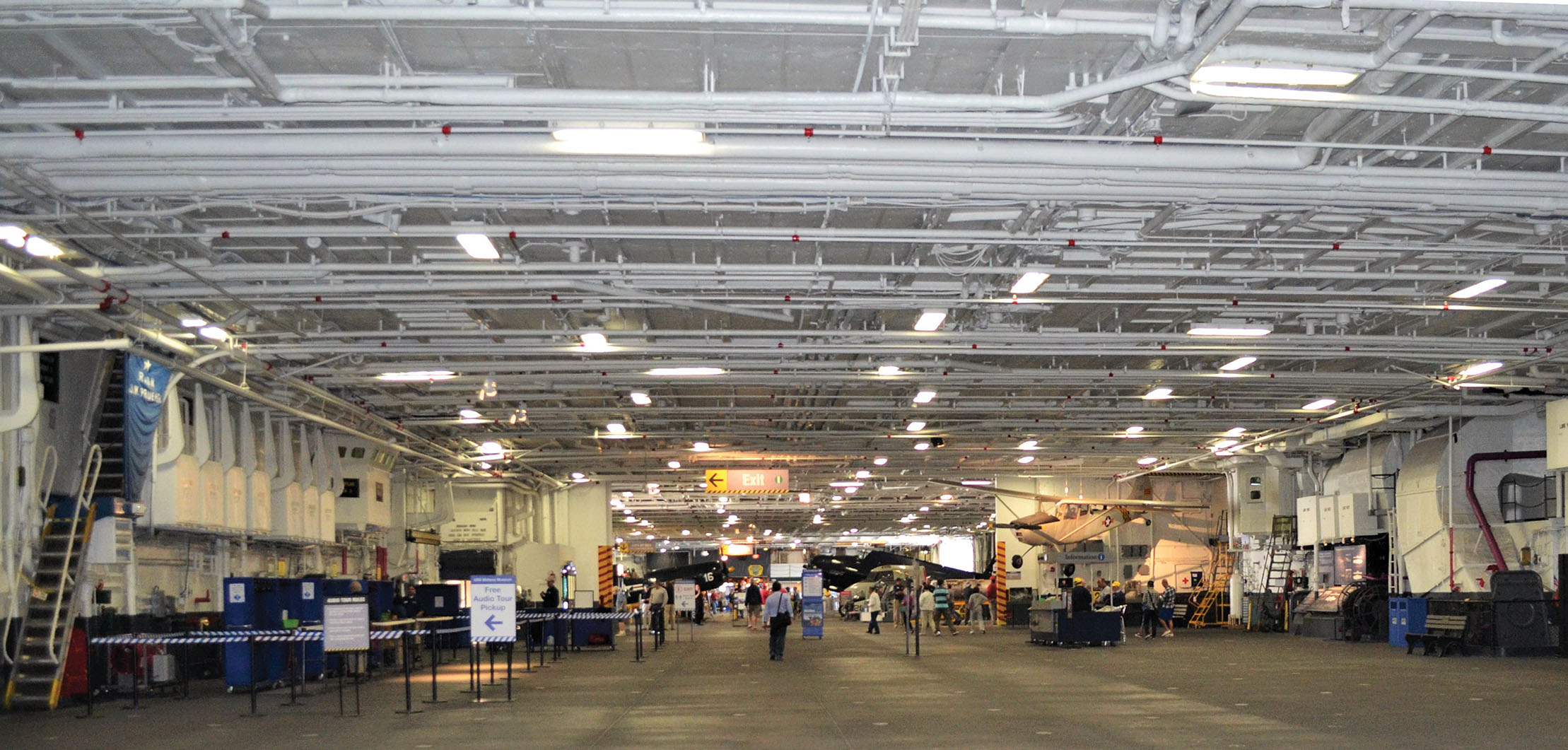
The USS Midway Museum opened to the public on June 10, 2004, at the Broadway Pier in San Diego. Attendance for the first year was 879,281—twice the expected number.
There are 60 carefully restored exhibit areas. The 10 acres of displays include 30 restored aircraft on the hangar deck and flight deck. Venturing below deck, visitors can see crew living spaces, mess halls, a chapel, laundry services and other sections of the ship.
Guided tours provide insights into the command center for flight operations and other ship systems from bow to stern. Flight simulators give you an opportunity to experience air combat in a 360-degree view, and you can roll, spin and loop. Other tours will bring you up to speed on flight deck operations.
The Battle of Midway Theater has 90 seats for showings of the “Voices of Midway” film, which tells the story of the World War II battle. The very extensive Midway Museum Research Library is available to researchers. Although the library doesn’t lend books, many of its resources are digitized and can be downloaded for free.
In May 2007 the USS Midway Museum received the Preserve America Presidential Award from President George W. Bush. The award is on display in the library. V
Tom Edwards is a freelance writer/photographer in Forest Lake, Minnesota. He thanks Karl Zingheim, USS Midway Museum staff historian, for his invaluable and frequent assistance.
For more stories from Vietnam magazine, subscribe here and visit us on Facebook:

